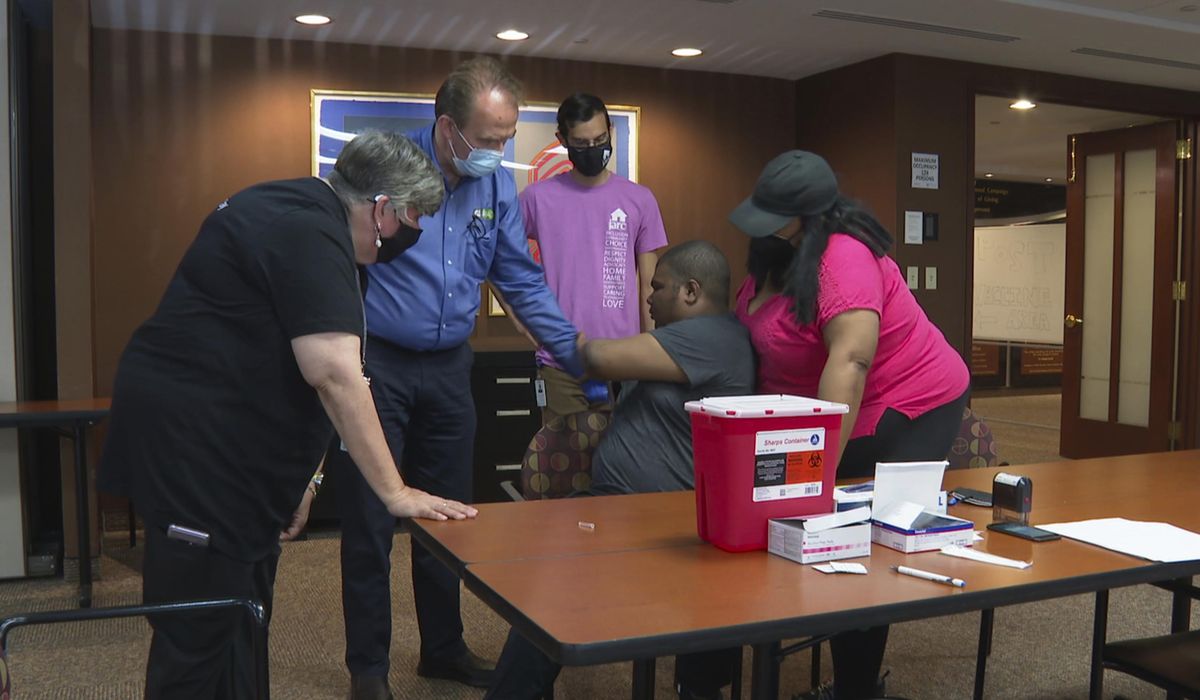


Diagnosed developmental disabilities in children and teenagers soared during the COVID-19 pandemic, the Centers for Disease Control and Prevention reported Thursday.
Reported delays in physical movement, language, social awareness and brain functioning among children ages 3–17 rose from 7.40% in 2019 to 8.56% in 2021, the CDC said.
Boys were three times likelier than girls to develop autism spectrum disorder, the federal agency noted.
The rising tide of youths with autism, intellectual disabilities and other developmental delays could overwhelm available medical resources, said CDC statistician Ben Zablotsky, a co-author of the report.
“Measuring the prevalence of developmental disabilities in the population helps gauge the adequacy of available services and interventions,” Mr. Zablotsky told The Washington Times. “As such, the increase seen in this report could potentially require a corresponding increase in available services and interventions.”
The report offers the most recent federal statistics on developmental disabilities. It did not explain the reason for the surge.
Some medical experts not involved in the CDC report said further research is needed to know whether pandemic lockdowns of schools and COVID infections played a role in the uptick.
“For many children, the lack of a consistent social encounter may have resulted in their potential symptoms of autism to become more evident, prompting parents to discuss [that] with their pediatrician,” Dr. Panagis Galiatsatos, a pulmonary and critical care physician at Johns Hopkins School of Medicine who has treated COVID patients, said in an email. “Further, COVID-19 itself has shown to cause mental health changes in many patients, likely influencing some of the symptoms exhibited by the children.”
It’s still too early to know if COVID infection directly affected the numbers, added pediatric psychiatrist Dr. John V. Campo, director of child and adolescent psychiatry at Johns Hopkins Children’s Center.
“Could it be virally related? Who knows?” Dr. Campo told The Times.
Researchers conducted the CDC report by interviewing families in their homes, with occasional telephone follow-ups to finish incomplete responses. The CDC noted that since pandemic restrictions disrupted the process, 68% of interviews in 2020 and 61.4% in 2021 unfolded partly over the phone.
The report found a significant increase in all developmental disorders from 2019 to 2021, building on an upward trend in recent decades.
The CDC redesigned its developmental disability questionnaire in 2019, making it difficult to compare with previous federal data.
Other key findings from the report:
• The presence of any developmental disability was lowest in Asian children.
• There were no significant differences in the prevalence of developmental disorders between White and Black and Hispanic children.
• The risk of intellectual disability increased with age, while the risk of other developmental delays decreased among older youths.
For more information, visit The Washington Times COVID-19 resource page.
• Sean Salai can be reached at ssalai@washingtontimes.com.
